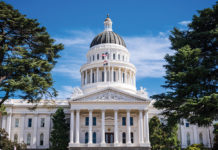I recently had the opportunity to meet with Annie Millar, Director of Curriculum and Instruction for the Healdsburg Unified School District, to discuss, among other things, how the new Common Core State Standards (CCSS) are affecting the way she goes about her work.
She said that the big change for students is what she called “Habits of the Mind.” It’s the universality of how we think as humans. It’s subtle; it’s design-based thinking … the same thinking engineers use to solve problems. Educators are now being asked to solve problems in a similar way. The central question is: How do students best learn in the 21st century?
She showed me a chart that is a side-by-side comparison of CCSS for English Language Arts, Math, and Next Generation Science Standards. Each category had eight responses such as “Demonstrate independence,” “Comprehend as well as critique” and “Come to understand other perspectives and cultures” in ELA; “Make sense of problems and persevere in solving them,” “Attend to precision,” and “Look for and express regularity in repeated reasoning” in Math; and “Ask questions (science) and define problems (engineering),” “Use mathematics and computational thinking,” and “Obtain, evaluate and communicate information,” for NGSS. The complexities of educating students in the 21st Century center around balancing content instruction with developing deep thinking processes.
In the past, the State would buy K-12 curriculum from the big publishers and school district curriculum directors would coordinate with administration and teachers on selecting a curriculum. At this time, CCSS-aligned curriculum is still a couple of years, if not more, away. So it’s not the publishers that are developing it, it’s the “in the trenches” teachers leading the way. For example, the State of Louisiana, knowing that they could not possibly be in CCSS-compliance, sent back the entire slate of 2014-2015 K-12 curricula to the publisher.
I told Annie that I had spoken with a HHS teacher and asked, considering the CCSS requirements, what textbook she was using. She told me that she modifies the curriculum from an existing textbook to be more in line with CCSS and students are tested on that material. It’s teachers like this that are literally writing the new curriculum.
I then asked Annie about how the teachers are adjusting to the new CCSS requirements. She said that one of her primary goals is to support her teachers during the transition. Teachers benefit from additional support in making the change. They have to strategize how to build a “deep” understanding of how lasting learning occurs as they plan for their students to develop the “habits of mind” outlined in the CCSS. And the very nature of the CCSS requires teachers to collaborate with each other just like students are being asked to collaborate with one another.
One of Annie’s focuses is building in time for teachers to prepare their lessons. She said teachers have very little time to prep compared to the time spent in front of students. She said that U.S. teachers get a lot less prep time than teachers in other countries with higher academic achievement.
Another issue Annie sees is class time. Through this school year, Healdsburg High School used a mostly traditional six, 50-minute class structure. The problem is that, just as the teacher is getting deep into the lesson, the class is over. Next year, the school will be going to a seven-period day with block days consisting of three, longer class times. This would allow the students to get more subject-engaged and allow the teachers more instruction time.
Annie said that, as stated in Mary Burke’s article “Less is more,” HUSD is in a unique position to have the resources to be innovative. Big leaps in the acquisition of technology, forays into project-based learning based on real-world connections and Healdsburg Charter School are just a few examples of the innovations currently underway.
She said that it’s just a matter of time until all schools convert to integrated digital curriculum that can be updated on a daily basis. The K-12 paper textbook market is a $8 billion a year industry. Just think how that money could be used to create an exciting and dynamic learning environment for the students and a great work environment for teachers.
Michael Haran is a Healdsburg resident and the director of research for the Institute of Progressive Education and Learning. He can be reached through their website at www.i-pel.org.
76.8
F
Healdsburg
April 21, 2025








